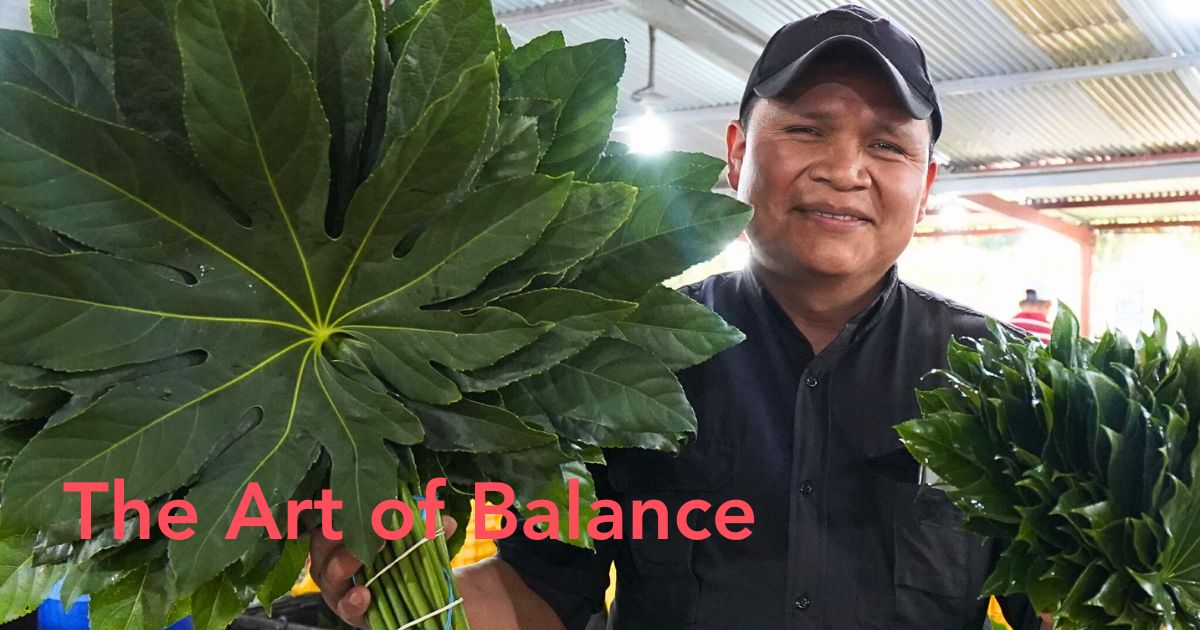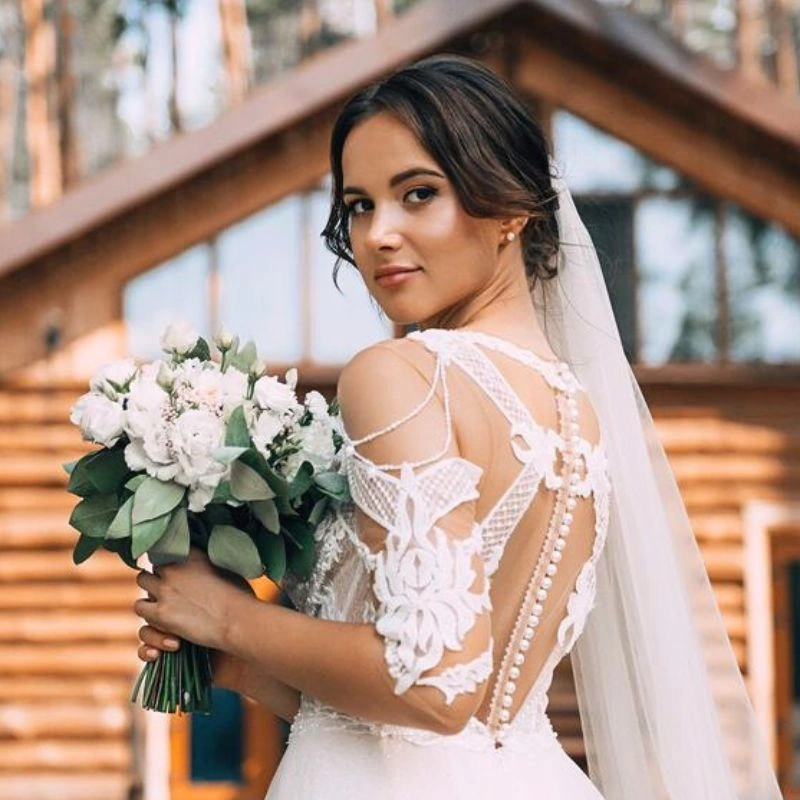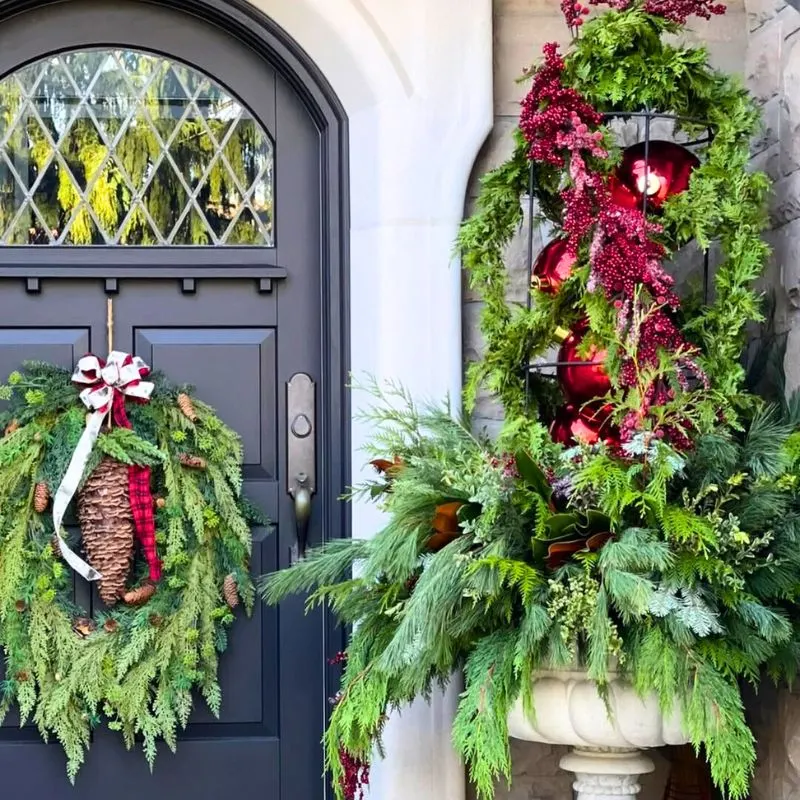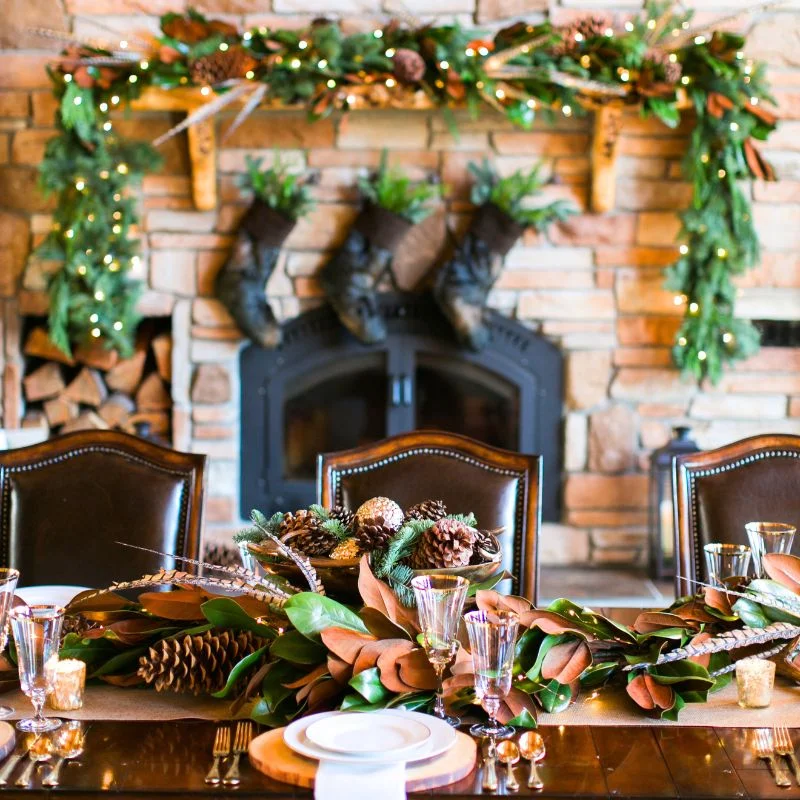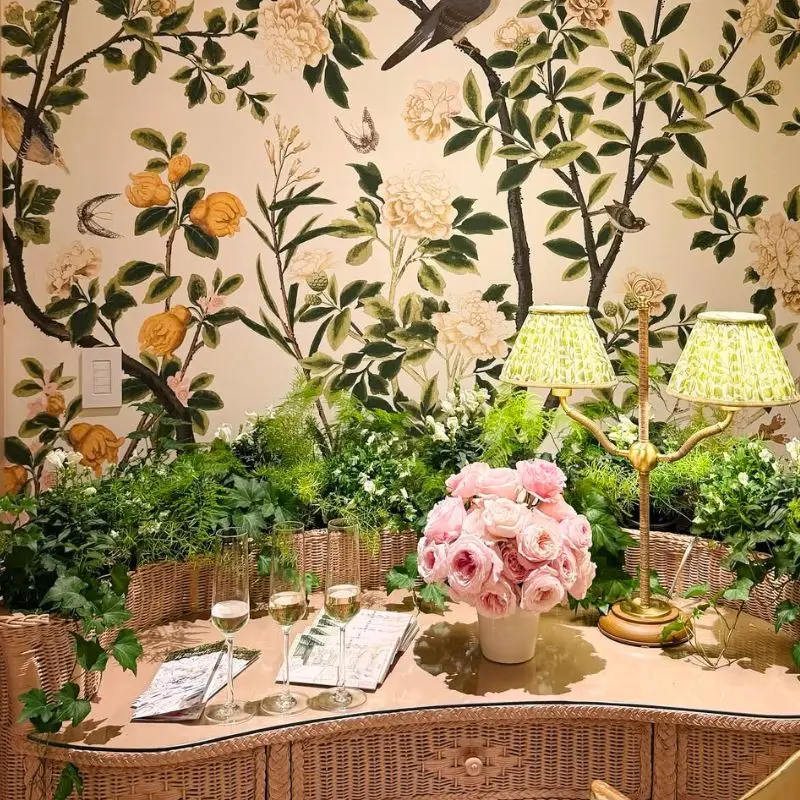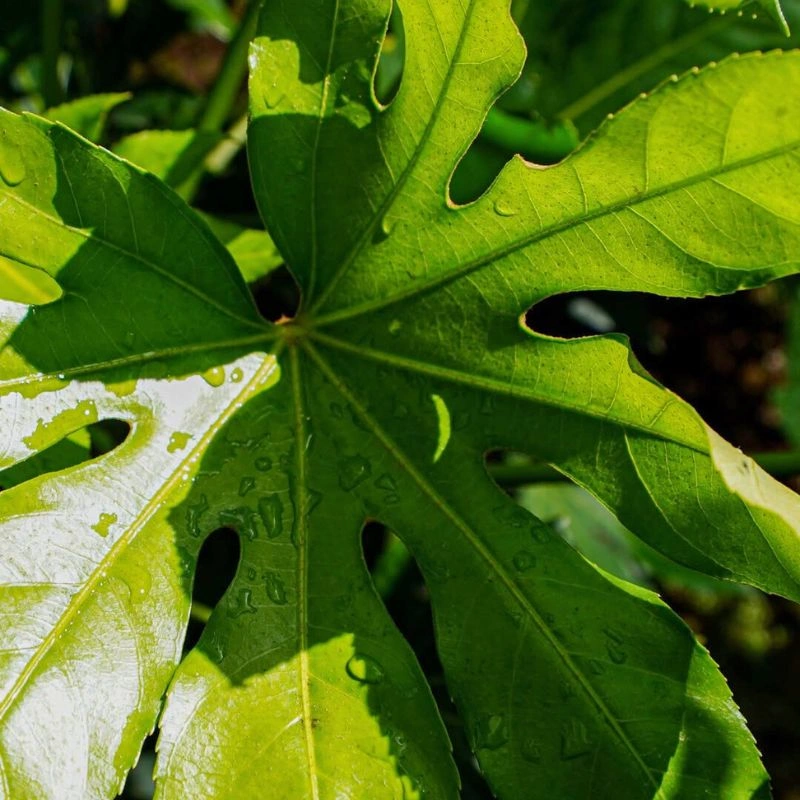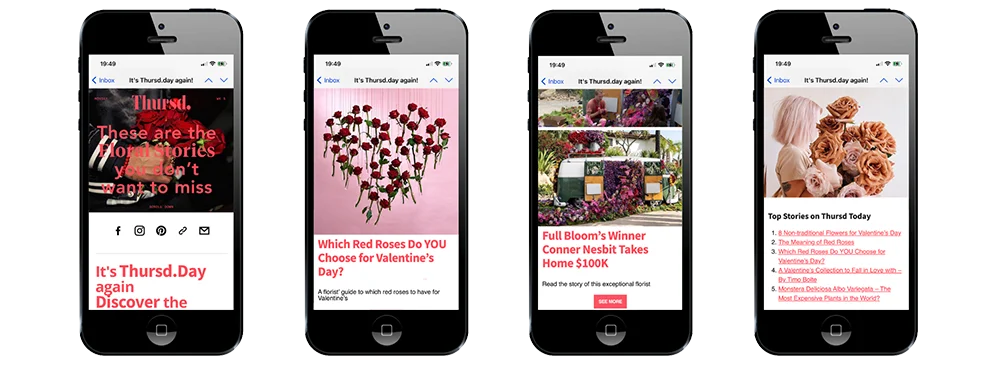When you picture a breathtaking bouquet, your eyes instantly fall on the roses, tulips, or lilies — the showstoppers. But behind every unforgettable arrangement lies a secret ingredient: fillers for the bouquet. These delicate stems of greenery, berries, or miniature flowers give every composition its structure, balance, and fullness. They are the background music to your floral symphony — subtle, but essential.
In this guide, we’ll explore the world of filler flowers for bouquets and greenery — from airy baby’s breath (Gypsophila) and romantic wax flower to textured Ruscus and Eucalyptus — and how they transform even the simplest bunch into an artful design.
Why Fillers Matter More Than You Think
Bouquets without fillers often feel flat or disconnected. Fillers are the elements that:
- Add depth and contrast between the main flowers.
- Provide texture — whether feathery, glossy, or velvety.
- Create balance and proportion, letting focal blooms stand out.
- Help designers stretch budgets while keeping arrangements lush and full.
- Bring color harmony, fragrance, and a natural aesthetic.
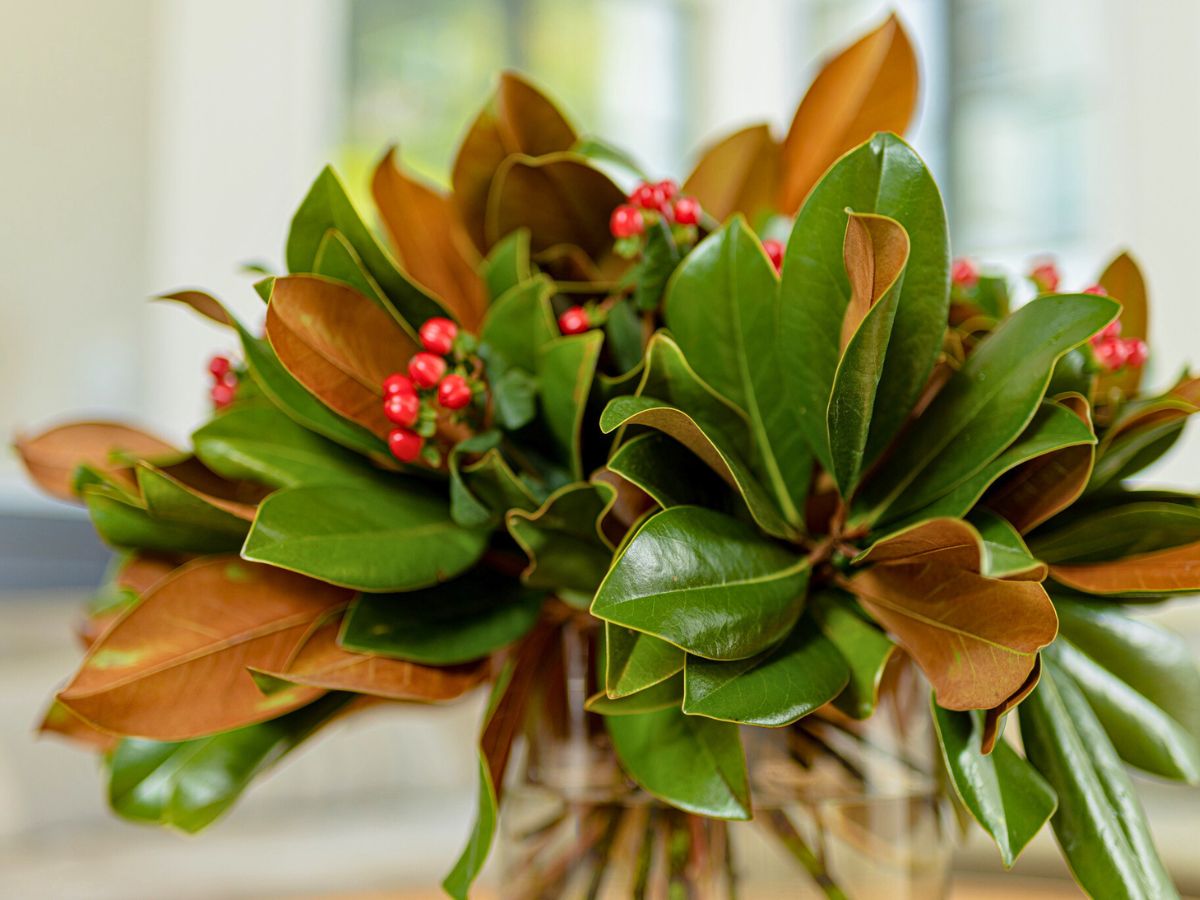
Whether you’re working on bridal bouquets, event centerpieces, or simple hand-tied bunches, fillers are the artistry behind that effortless “wow” factor.
Greenery: The Foundation of Every Bouquet
Greenery forms the framework that gives a bouquet its shape, movement, and visual flow. Here are some of the most beloved types of greenery that double as fillers for a bouquet — each with its own personality and purpose.
1. Eucalyptus
Known for its silvery tones and soft texture, Eucalyptus adds a modern, airy charm to any arrangement. There are several varieties — Silver Dollar, Seeded, and Baby Blue Eucalyptus — each offering a unique look. Its mild fragrance also makes it a favorite for weddings and indoor displays.

2. Ruscus
Elegant and structured, Italian type Ruscus Racemosa or Israeli type Ruscus Hypophyllum bring durability and visual rhythm. The glossy, deep green leaves act as the perfect neutral backdrop that highlights brighter flower hues.

3. Myrtle (Myrtaceae)
Myrtle is the secret weapon of many wedding florists. Symbolizing love and prosperity, its polished leaves and refined stems are ideal for compact, formal bouquets or lush floral arches.

4. Dusty Miller (Jacobaea Maritime / Senecio Cineraria)
Few greens soften a bouquet as beautifully as Dusty Miller. Botanically, this foliage is known under the names Jacobaea maritime, yet also as Senecio cineraria. Its velvety, silver-gray leaves introduce a dreamy contrast against whites, pinks, or pastel flowers — perfect for romantic or vintage-inspired designs.
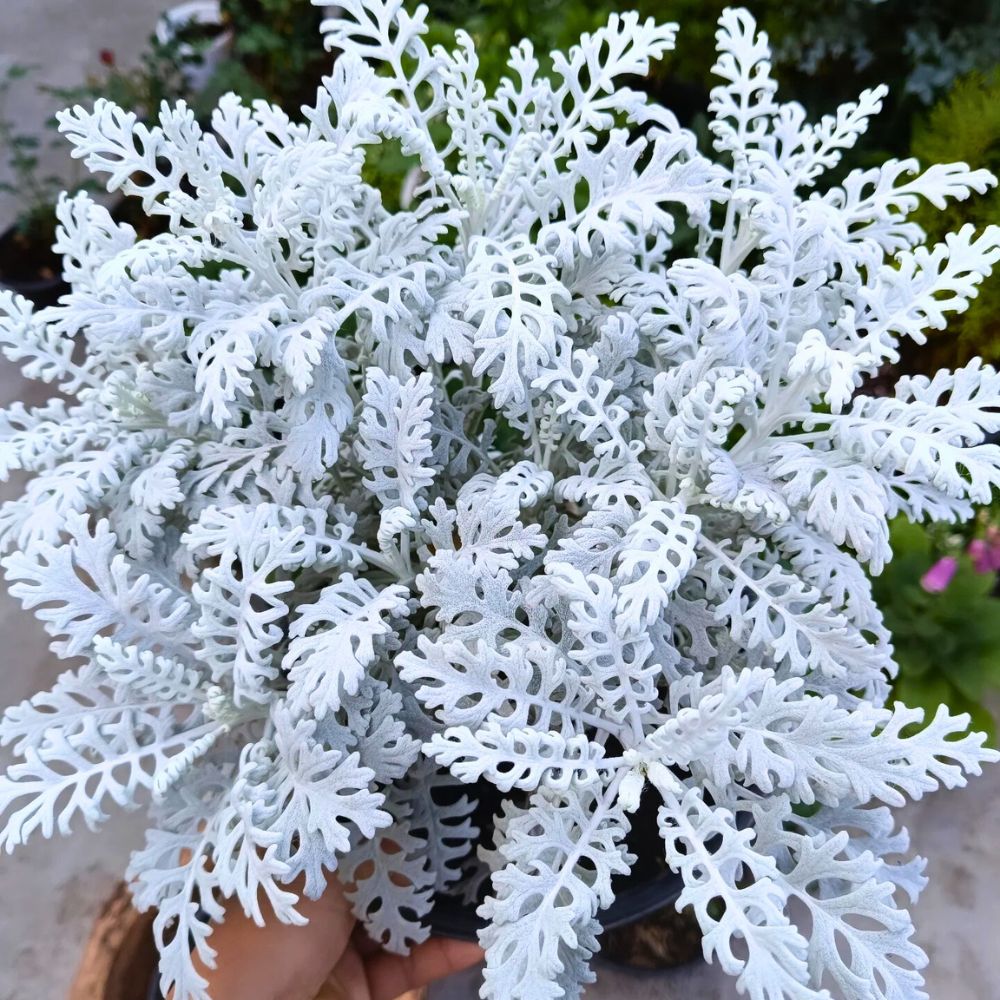
5. Pittosporum
Variegated Pittosporum adds depth and color variation to arrangements. Its creamy edges and thick foliage are perfect for filling spaces without overshadowing other stems.

6. Ferns and Leatherleaf (Rumohra Adiantiformis)
The feathery fronds of ferns bring texture and movement. Leatherleaf fern, in particular, is sturdy, versatile, and a staple for florists around the world.

7. Ivy (Hedera)
Trailing ivy (Hedera) brings graceful movement and an organic feel to cascading bouquets. Its flexibility allows you to shape bouquets naturally, echoing the look of a freshly gathered garden bunch.

7. Aralia (Fatsia Japonica)
Aralia leaves (botanical: Fatsia Japonica) are prized for their bold, sculptural form and glossy finish. Their dramatic shape instantly adds structure and a tropical edge to bouquets, making them perfect for contemporary or statement floral designs. Aralia’s durability also makes it a dependable choice for both fresh and event arrangements where long-lasting foliage is essential.

7. Magnolia
Magnolia foliage stands out with its rich, dual-toned leaves — deep green on top and velvety bronze underneath. It brings luxurious depth, texture, and warmth to arrangements, especially in seasonal or romantic settings. The leaves are sturdy and long-lasting, making Magnolia a go-to for florists seeking elegance with a natural touch.

Filler Flowers for Bouquet: Adding Character and Softness
While greenery builds the base, filler flowers bring texture, tone, and playfulness to the mix. They occupy the delicate spaces between main blooms, softening transitions and adding visual interest. Let’s explore the most popular (and loved) ones.
1. Baby’s Breath (Gypsophila)
Perhaps the most iconic filler flower ever, baby’s breath — aka Gypsophila or 'gyp' — is light, cloud-like, and incredibly versatile. It’s the ultimate symbol of purity and everlasting love. Whether used alone in minimalist bunches or woven between roses and peonies, it brings an ethereal, soft glow.
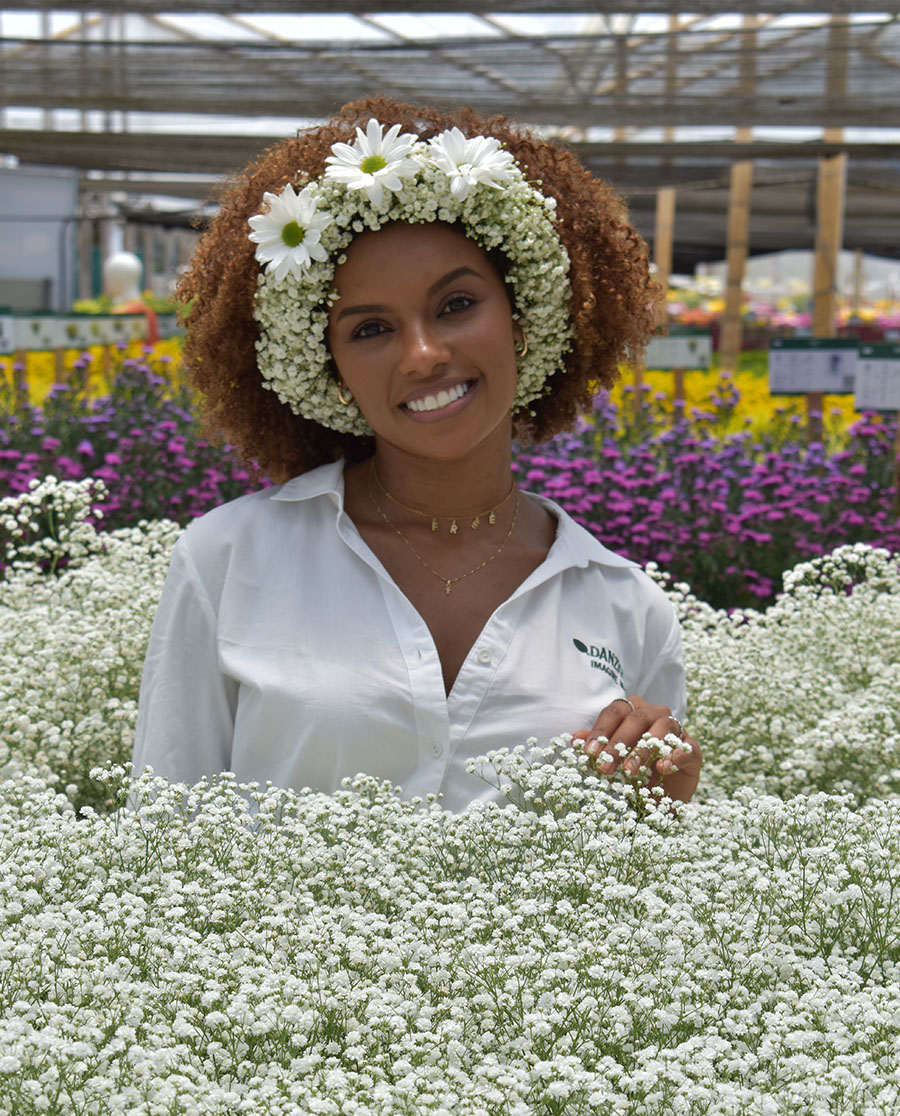
2. Wax Flower (Chamelaucium)
Tiny, star-shaped blossoms with woody stems. Wax flowers add rustic charm and subtle fragrance. Native to Australia, they symbolize lasting love and patience, making them a timeless choice for bridal arrangements and natural-style bouquets.
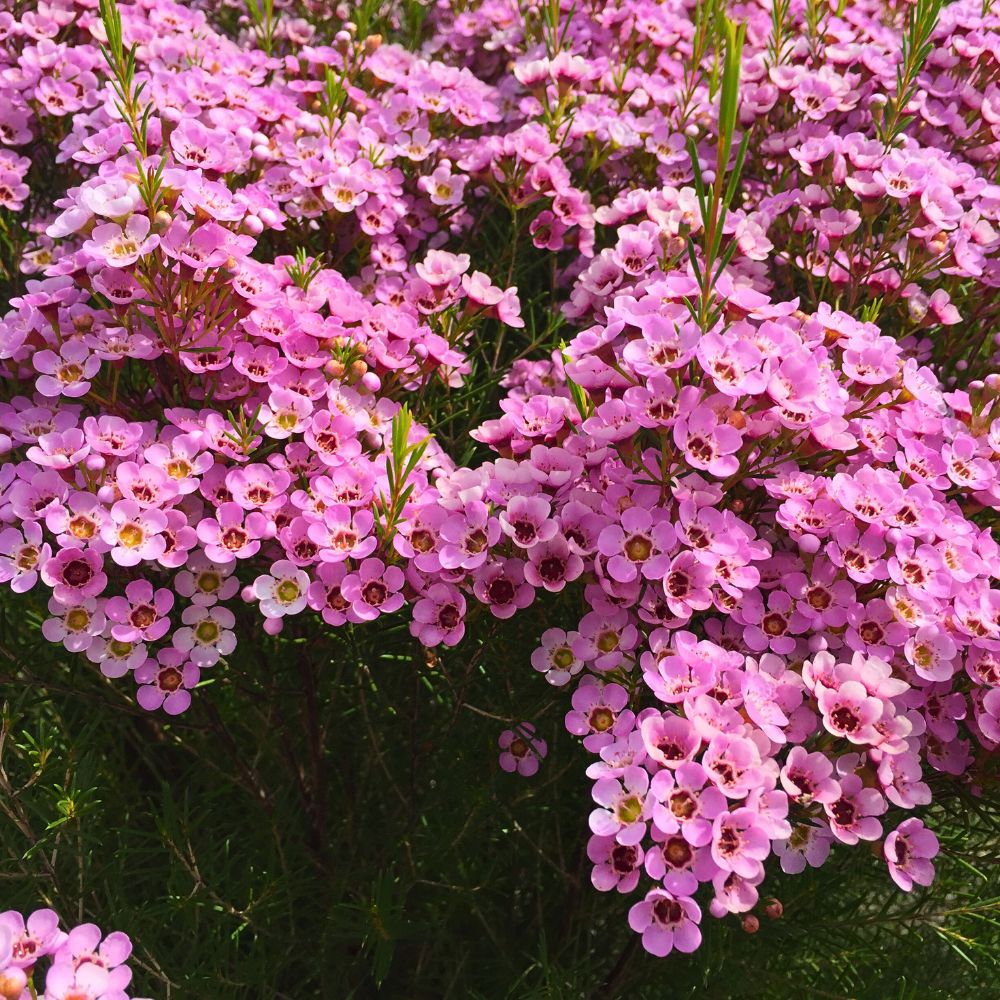
3. Statice (Limonium Sinuatum)
With its papery texture and jewel-toned hues (lavender, violet, and cream), statice provides both volume and lasting color. It also dries beautifully, making it perfect for both fresh and preserved arrangements.

4. Limonium (Limonium Sinensis)
Often mistaken for statice, limonium has finer stems and dainty clusters, creating a delicate haze in bouquets. Its soft purple shades pair beautifully with bold roses or Chrysanthemums.
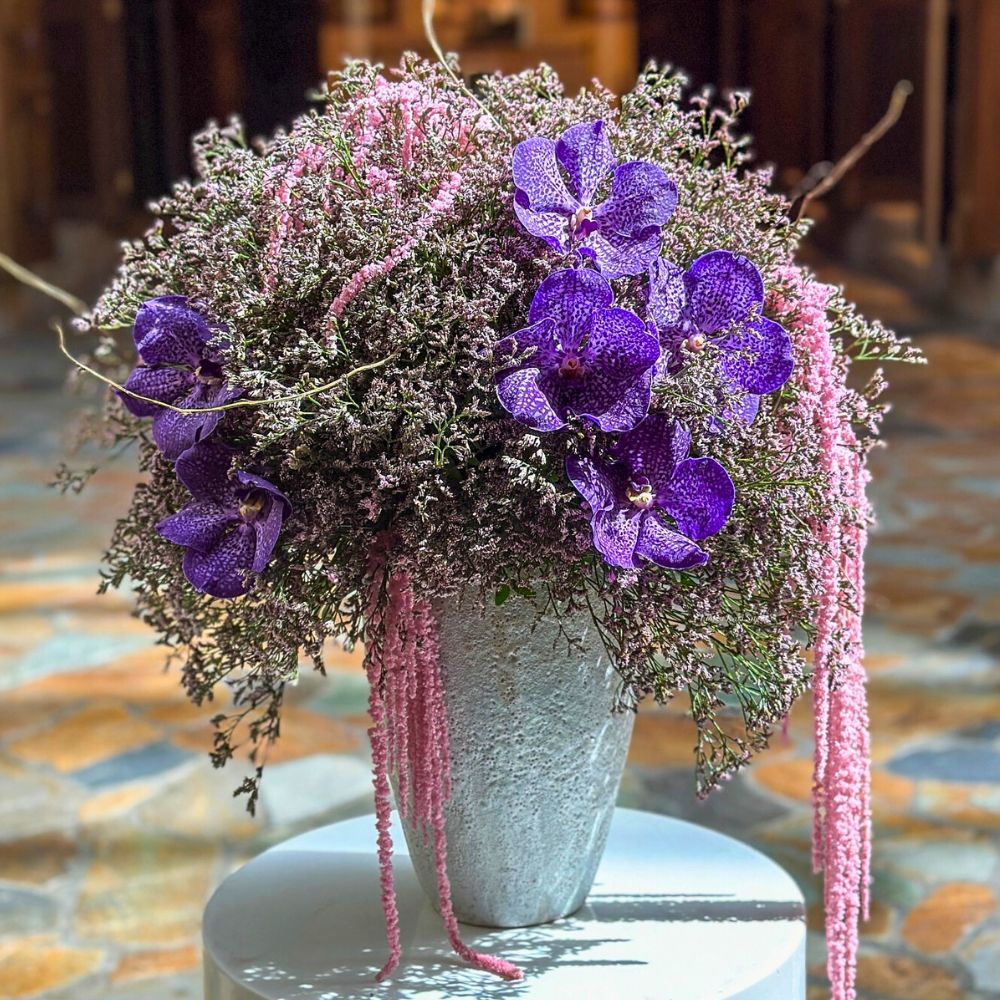
5. Queen Anne’s Lace (Daucus Carota)
Also known as wild carrot, this lacy white filler adds an airy, romantic feel reminiscent of wildflower meadows. It’s perfect for bohemian or garden-inspired designs.

6. Goldenrod (Solidago)
Vibrant and cheerful, Solidago brings yellow brightness to any mix. It’s excellent for adding texture and a sun-kissed touch to arrangements.
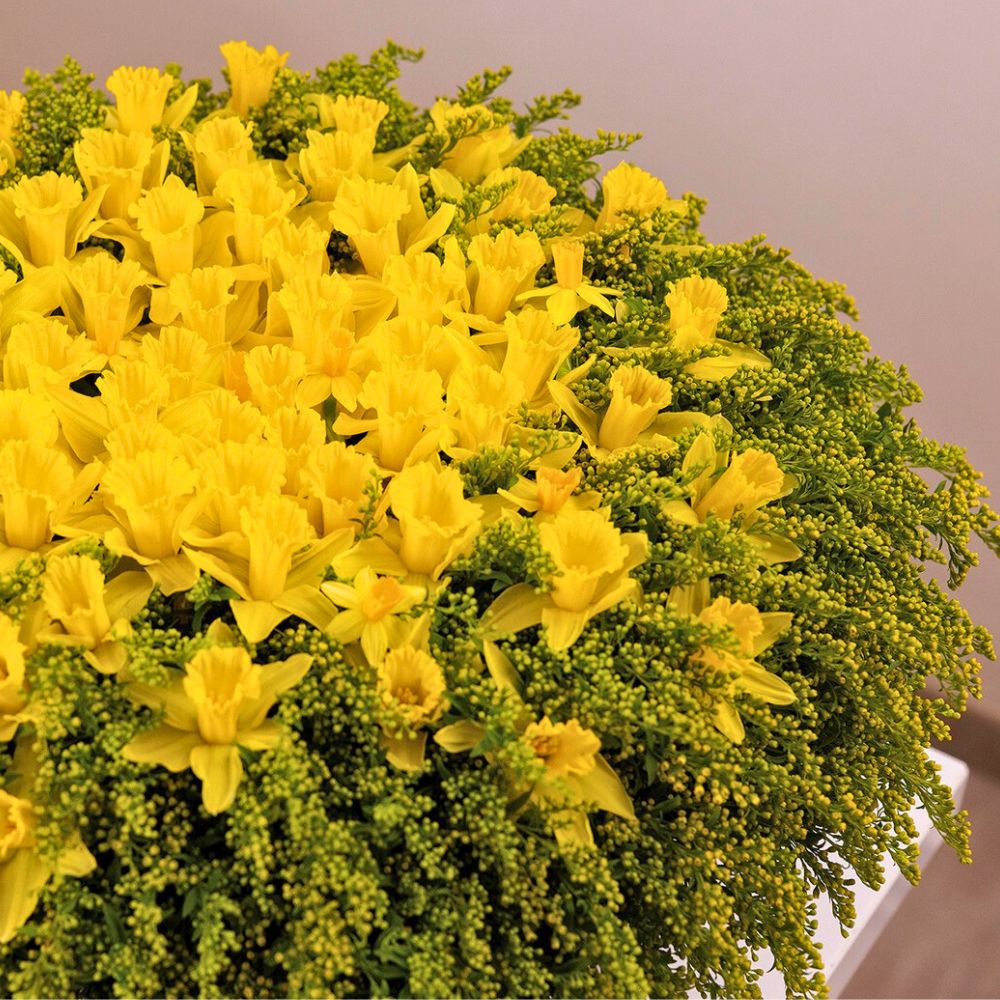
7. Aster
These mini daisy-like flowers add color and depth. Their small, cheerful blooms bring a natural and effortless countryside touch to bouquets.

8. Hypericum Berries
A texture lover’s dream. Hypericum berries — in shades of green, pink, red, and ivory — add a pop of structure and a dose of color that complements both rustic and elegant arrangements.

9. Alstroemeria
Though commonly used as a primary flower, smaller stems of Alstroemeria can act as filler thanks to their longevity and patterned petals. They’re a great way to bring in subtle color variation.

10. Caspia
This wispy, lavender-hued filler adds height and texture. It’s perfect for wildflower arrangements or as a subtle background element in structured bouquets.

How to Choose the Right Fillers for Your Bouquet
Selecting the right filler is both an art and a strategy. Here’s what to keep in mind:
- Balance: Combine dense foliage like Ruscus with airy accents like Gypsophila for visual harmony.
- Color Coordination: Match tones subtly. Silver foliage complements pastel roses, while rich greenery pairs beautifully with vibrant flowers.
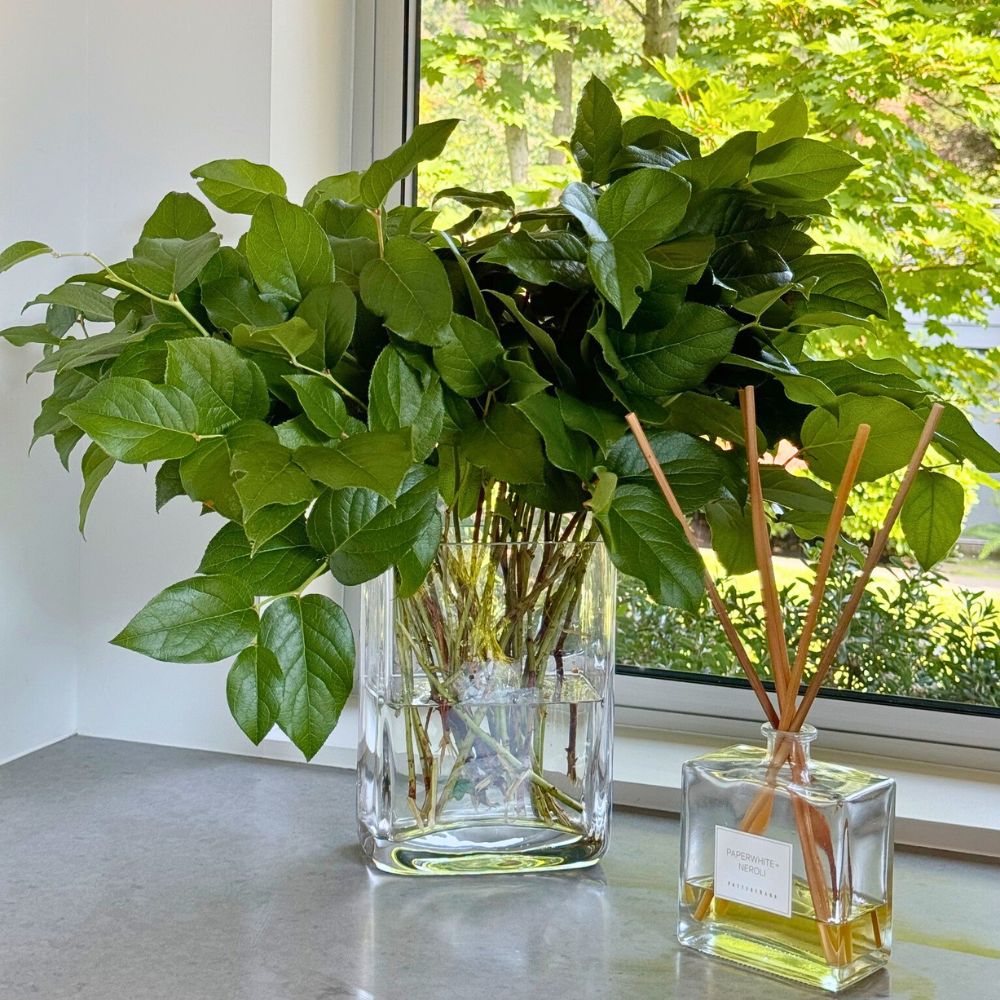
- Texture: Mix textures — smooth Eucalyptus with the feathery touch of ferns or statice — for depth.
- Durability: Opt for fillers with good vase life, especially for events lasting several days.
- Budget: Using fillers strategically can help achieve luxurious volume without overspending.
- Seasonality: When possible, select seasonal or locally available fillers — they last longer and look fresher.
Pro Tips From Floral Designers
Professional florists often describe fillers as the bridge between structure and emotion in a bouquet. When arranging, think in three dimensions — fillers shouldn’t just sit behind the focal flowers but weave gracefully between the stems to create depth and natural movement. Alternate leaf shapes, from round to linear or feathery, to achieve a dynamic, organic flow that feels effortless.
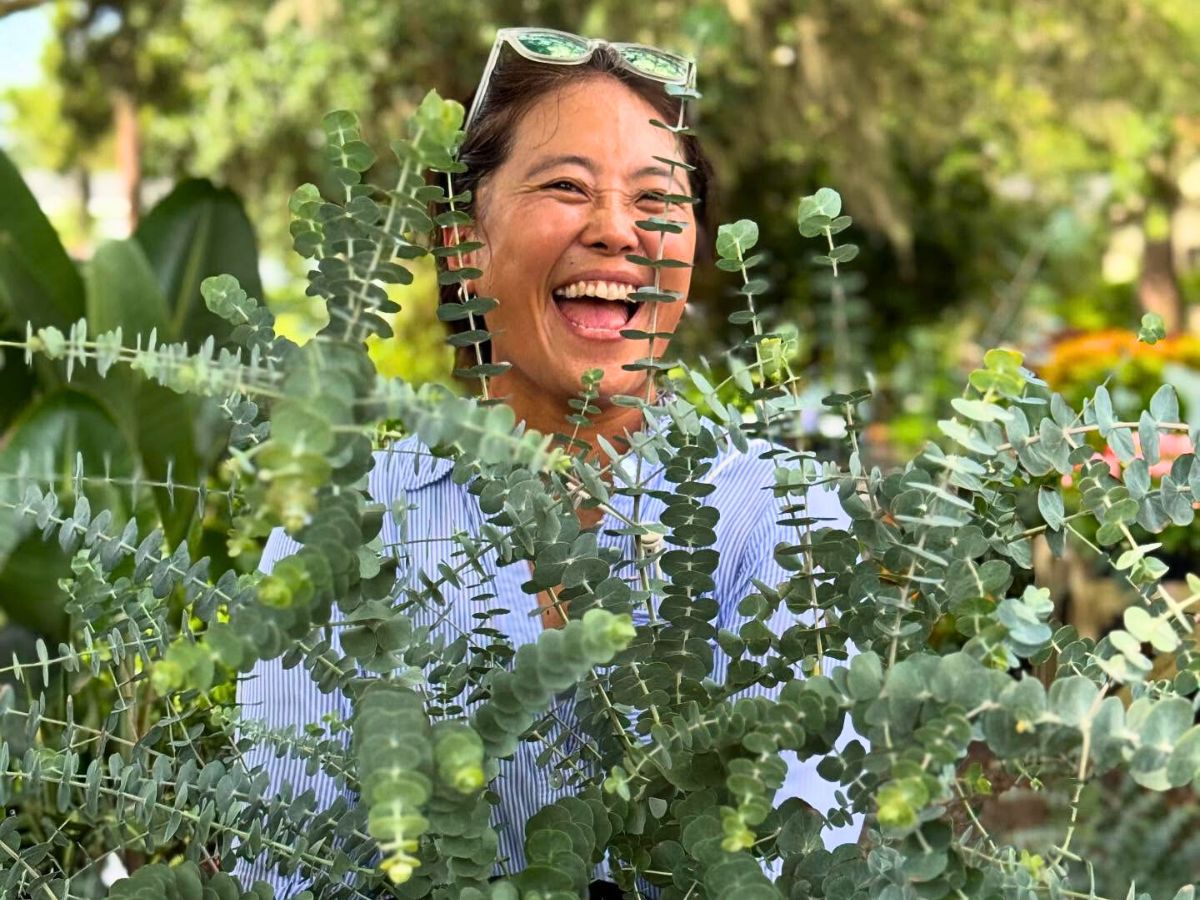
Incorporating scented fillers such as Eucalyptus or wax flower can elevate the sensory experience, adding fragrance and freshness to your design. Always remember to strip the lower leaves before placing stems in water, as this simple habit dramatically improves vase life and clarity in composition. And when in doubt, follow the classic “one-third rule”: let about a third of your bouquet consist of filler flowers or greenery for perfect visual balance and harmony.
In the world of floristry, fillers are the storytellers that hold the bouquet together — the quiet elegance that allows main blooms to shine. They add softness, structure, and meaning. From the rustic Wax flower to the timeless baby’s breath, the right filler flowers for a bouquet can transform a handful of stems into an unforgettable design.

So next time you arrange a bouquet, remember: it’s not just about the stars of the show, but about the symphony they’re part of — the green notes and soft fillers that make everything come alive.
Header image by @Tak Global.

